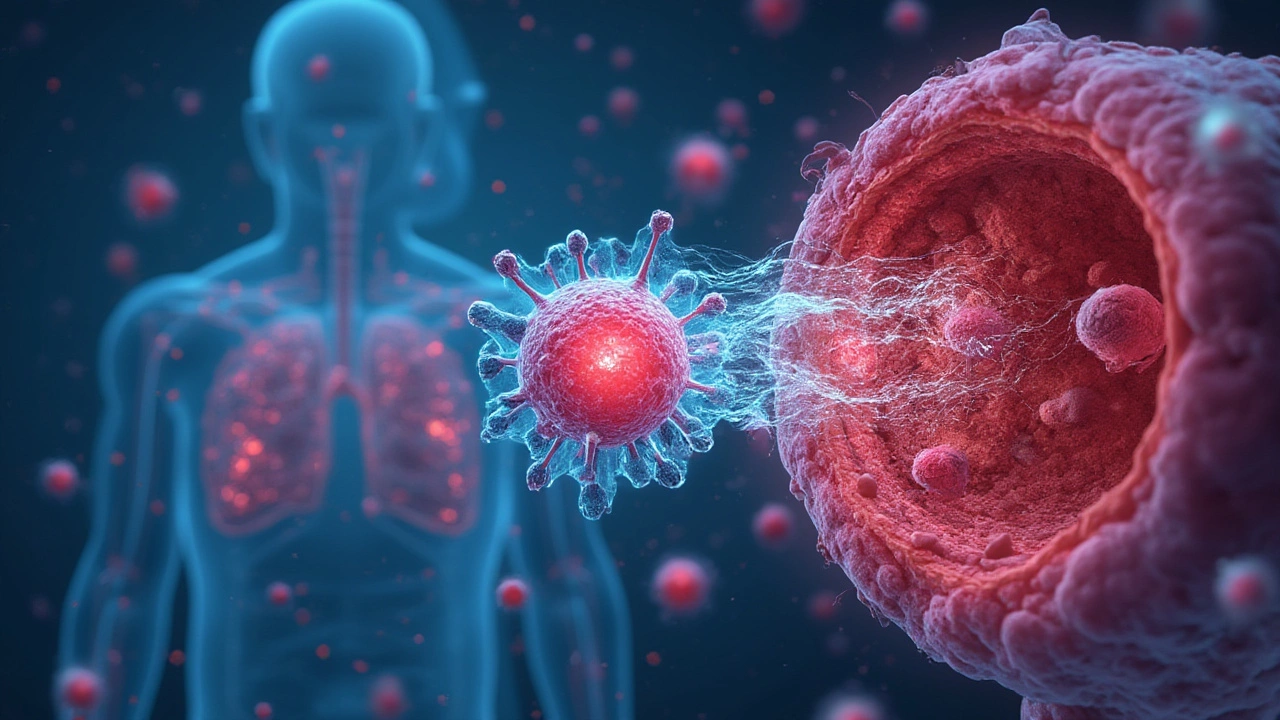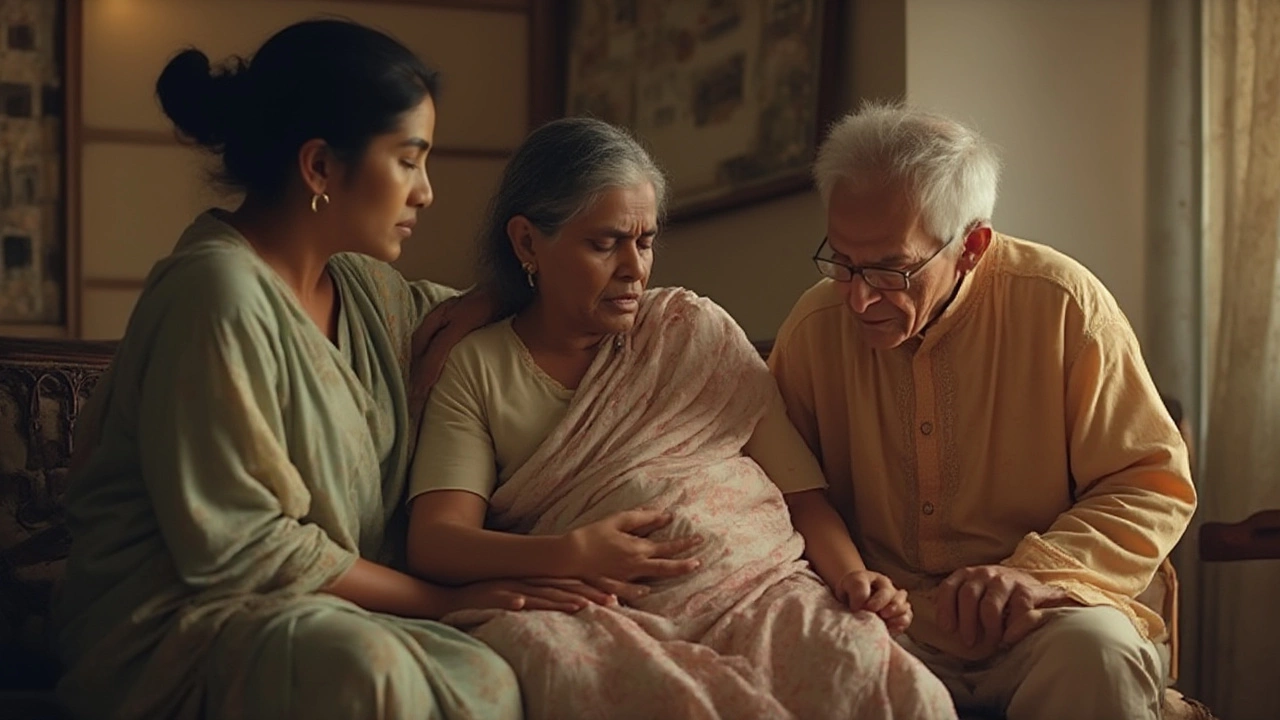Imagine getting blindsided by a disease that seems to move at lightning speed. Aggressive cancers don’t play fair—they don’t give you time to settle in, research, or even process what’s happening. One moment, you feel a little off. The next, you’re sitting in a doctor’s office, trying to wrap your head around words like “survival rate” and “treatment plan.” There’s nothing scarier than realizing that some cancers can outrun nearly every effort to stop them. Most people talk about cancer as one big threat, but in reality, some types are like cheetahs while others crawl. The most aggressive cancer leaves little room for mistakes or delays. It’s relentless, sneaky, and sometimes the odds just aren’t great.
Why Are Some Cancers More Aggressive Than Others?
Let’s get real—cancer isn’t a single thing. It’s more like a family of diseases with different personalities. Some cancers grow slowly, almost politely, while others seem wired to cause chaos. What makes the most aggressive cancers tick? For starters, it all boils down to how quickly the cancer cells divide, how soon they spread to other parts of the body, and how slippery they are when it comes to treatment.
Cancers like pancreatic, glioblastoma (a type of brain tumor), small cell lung cancer, and certain leukemias are notorious for their speed. Take pancreatic cancer—it’s often called the "silent killer." Why? Because it rarely shows symptoms until it’s way too late. The pancreas sits deep inside the abdomen, so early tumors don’t make a fuss. By the time pain, jaundice, or weight loss hit, cancer might have already spread to the liver, lungs, or lining of the abdomen.
Brain cancers like glioblastoma don’t play by the usual rules, either. Glioblastoma grows so fast that even with surgery, chemo, and radiation, median survival is just about 15 months, according to a 2023 review in Nature. The brain just isn’t built for extra space—when tumors expand, symptoms show up early, but even that doesn’t always lead to a cure. These cells are like shape-shifters, ducking around even the strongest treatments.
But why do some cancers outrun all control? Sometimes it’s about genetics—certain mutations make cancer cells divide faster and resist death. Other times, the immune system’s checks and balances stop working. Imagine a traffic cop falling asleep at the busiest intersection of the week. Suddenly, all bets are off. The most aggressive cancers are masters at tricking the body; they create their own blood supply (angiogenesis), and can even send out scouting cells to colonize new organs. By the time doctors spot the invasion, the disease is no longer local. It’s global—inside your own body.
I’ve always found it fascinating (and a bit disturbing) how cancer cells can hijack the normal rules of biology. For example, pancreatic cancer cells can slip into nearby nerves to travel, giving them hidden highways to spread. In the case of acute leukemias, cancer crowds out healthy blood cells in the bone marrow faster than a viral meme taking over your feed. The end result is a total shutdown of the body’s basic defenses—no red blood cells, no platelets, barely any white cells.
So, when we talk about "aggressive" cancer, it’s a mix of speed, stealth, and defiance. Treatments that work on slow-growing cancers often barely dent these ultra-fast types. That’s why early detection, tough as it may be, can make a world of difference—sometimes the only difference.
| Cancer Type | 5-year Survival Rate (%) | Median Time to Progression |
|---|---|---|
| Pancreatic (Stage IV) | 3 | 3-6 months |
| Glioblastoma | 6 | 7 months |
| Small Cell Lung | 7 | 4 months |
| Acute Myeloid Leukemia (elderly) | 5 | 2-6 months |
| Esophageal (Stage IV) | 4 | 3-8 months |
Numbers like this are cold but honest. They make you want to hug the people you love, book that vacation, or maybe, if you’re my cat Simba, just nap in a sunny window. But they’re not the whole story—there’s always research going on, and sometimes, real progress. More targeted therapies are in the pipeline now than even five years ago. That means, in some rare cases, people beat the odds. But "aggressive" is still the word that best describes these cancers—they’re fast, they’re ruthless, and they demand smart action.

Spotting the Warning Signs: Symptoms That Deserve Attention
If aggressive cancers are good at anything, it’s sneaking under the radar. You don’t want to wait until you feel really awful to pay attention. Sadly, that’s what gives pancreatic, ovarian, and esophageal cancers their reputation for being deadly—they don’t knock loudly until things are advanced.
Take pancreatic cancer. You might think a deadly disease would come with wild symptoms, but early signs are super easy to shrug off. Think mild belly pain, a little fatigue, or some unexplained weight loss. If your skin or eyes look yellow (jaundice), the cancer might have already blocked a bile duct. Suddenly, a vague symptom becomes a flashing red alert. Sometimes people brush off these changes or chalk them up to stress, food poisoning, or getting older.
Glioblastoma is sneakier. Early symptoms can look like anything from headaches that don’t go away, to mood changes, to a clumsy stumble in the hallway. Sometimes, seizures come out of nowhere. Because the brain controls everything, symptoms depend on where the tumor is hiding. A patient might call their doctor for blurry vision or just feeling “weird”—but in these cases, every day counts.
Lung cancers can act a bit more obvious: persistent cough, coughing up blood, hoarseness, or repeated lung infections. But many people expect risk factors like smoking; non-smokers can be caught completely off-guard. Small cell lung cancer, in particular, doubles so fast, it can take over the lungs before a person feels short of breath. And let’s not forget about unexplained bone pain, bruising, or infections for leukemia.
If you’ve ever had a pet like my Simba, you know cats are experts at hiding illness until it’s serious. Human bodies can be just as secretive with these cancers. That’s partly why routine check-ups matter—even when you feel fine. Blood tests and imaging can sometimes pick up problems before symptoms spiral.
Certain red flags never deserve an excuse:
- Unexpected, persistent pain that won’t go away
- Unexplained weight loss (think: more than 5% body weight in 6 months)
- Jaundice (yellowing of eyes or skin)
- Blood in stool, urine, or sputum
- Frequent infections or noticeable bruising
- Sudden behavior or memory changes
- Difficulty swallowing, nausea, or bloating that lingers
The real trick isn’t to walk around worried every day, but to take your body seriously when it sends unusual signals. It’s boring advice, but true: Ignoring symptoms is exactly what these cancers rely on. Busy lives make it easy to put off a doctor visit—but with aggressive cancer, time is literally life. If your doctor dismisses weird symptoms, get a second opinion. The squeaky wheel gets the grease. Sometimes, it even gets you a lifesaving diagnosis.

Fighting Back: Latest Treatments, Research, and Survival Stories
If you or someone you care about hears the words “aggressive cancer,” it feels like a punch in the chest. But the story doesn’t always end how you think. Treatments aren’t stuck in the past—doctors, researchers, and even families are pushing new boundaries every year. It’s tough, but not hopeless.
First, let’s clear up a myth: aggressive doesn’t mean unbeatable. The big challenge is speed. Fast-growing cancers usually need a multi-pronged attack—surgery, chemotherapy, radiation, sometimes targeted therapy or immunotherapy. For pancreatic cancer, surgery is only an option for about 20% of patients—most cases are found too late. But recent advances, like FOLFIRINOX (a combo of four chemo drugs), have boosted median survival from 6 months to almost a year for some. Small victories count when you’re fighting on a tough battlefield.
Glioblastoma is another brutal opponent. Surgery removes as much tumor as possible, but doctors almost always follow up with radiation and temozolomide (a chemo pill). More promising are the experimental treatments—the FDA approved Tumor Treating Fields (TTF), which use electric fields via a wearable cap. Some patients are seeing their survival double compared to five years ago, but it's still a giant mountain to climb.
Survival is also about new weapons. Targeted therapies zero in on specific genetic quirks. For example, in some aggressive lung cancers, drugs like osimertinib or larotrectinib hit tumors with a needle’s precision, avoiding some collateral damage to the rest of the body. Immunotherapy—tricking the immune system to attack cancer—has been a game changer, especially for cancers with certain markers. In small cell lung cancer, adding immunotherapy to chemo doubled the number of patients reaching two years.
I’ll admit, numbers can be discouraging. But the progress is real. In 2024, researchers reported that a select group of pancreatic cancer patients with mutations in their DNA repair genes survived over three years—long enough for new treatments to be discovered that might stretch the odds even further.
What about patients themselves? They’re not statistics. People find hope in surprising places—support groups, new clinical trials, personalized nutrition, or just a reminder from their dog or cat that life still has good, everyday moments. One friend of mine joined a basket trial (a study using drugs tailored to a tumor’s markers, not its location). Her lung cancer shrank dramatically on a drug not even aimed at her cancer type. Sometimes, being proactive and searching for clinical trials can open new doors.
Here’s what matters most: don’t face aggressive cancer alone. Whether it’s a local support group, a nurse navigator, or even a neighbor who’s happy to cat-sit Simba (he’s a pretty good judge of character), build your team. Second, ask about genetic testing; many aggressive cancers have mutations that open the door to specific drugs. Third, if you’re eligible, check clinicaltrials.gov for open studies. You might qualify for the next breakthrough treatment. And lastly—take care of your mind. The emotional rollercoaster can be just as rough as the physical side effects. Medications, therapy, support groups, and honest conversations lighten the load.
Here’s some good news. In the last decade, five-year survival rates have improved for many aggressive cancers due to better treatments and earlier detection. Small steps, but real ones. Cancer might be aggressive, but the human drive to outsmart it is relentless, too. Stay alert, stay informed, and never be afraid to demand answers. If Simba taught me one thing, it’s that curiosity might not kill the cat—sometimes, it saves a life.
